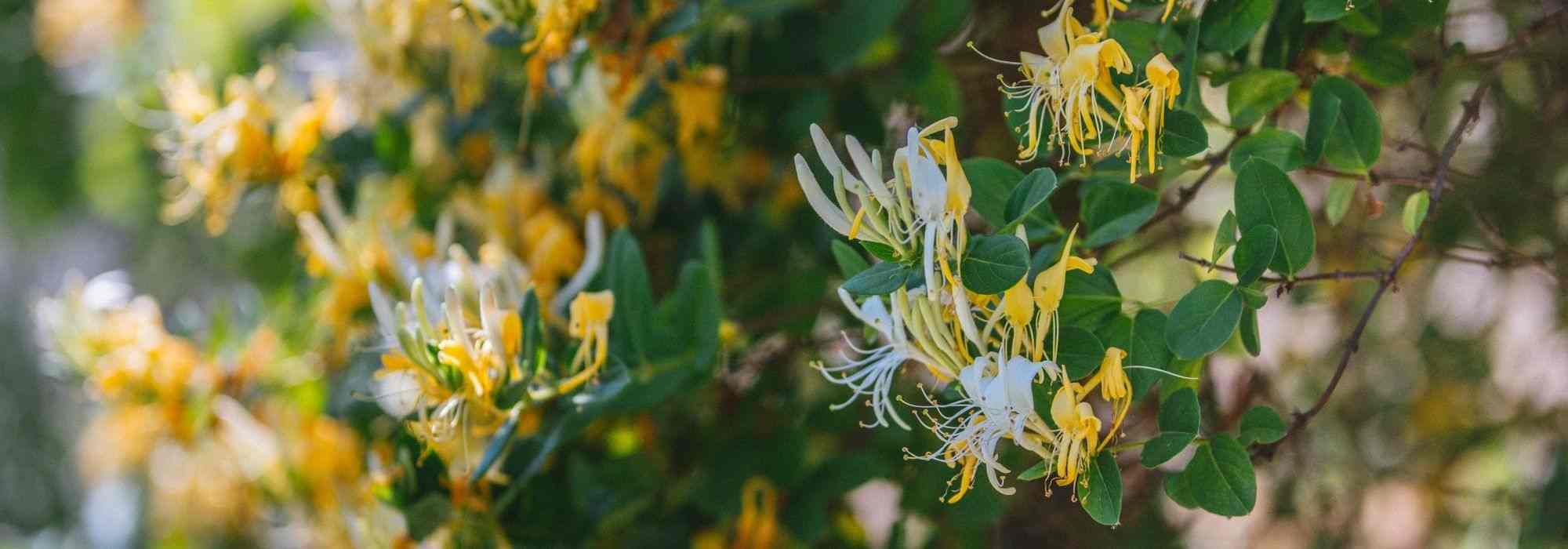
5 climbing plants to grow in pots on an east-facing balcony
Our selection of our favourite climbing plants for partial shade or semi-sunny exposure
Contents
In an east-facing position, plants benefit from morning sunlight right from sunrise, followed by generally shade for the rest of the day. In summer, plants are protected from the scorching rays of the sun and intense heat. However, in winter, they may suffer from cold, humidity, and frost.
To green up an east-facing balcony, we recommend choosing hardy plants that have moderate light requirements and are suited to partial shade.
The climbing plants in pots offer a beautiful range of choices, with flowerings, foliage, colours, and fragrances to suit all tastes.
Here is our selection of favourite climbing plants, suitable for the specific conditions of a partially sunny balcony.
Akebia, uncommon flowers
Akebia, also known as chocolate vine, is a voluble climbing plant of Asian origin that is still relatively uncommon.
Spring flowering occurs from April to June, sometimes extending into July. During this time, the plant adorns itself with magnificent clusters of colourful flowers, such as:
- the typical species Akebia quinata, with deep violet-purple flowers that later transform into small lilac fruits by late summer;
- ‘Alba’, featuring clusters of immaculate white flowers that reveal a spicy, vanilla fragrance;
- ‘Cream Form’, with cream flowers showcasing a pink-violet heart;
- ‘Silver Bells’, boasting a stunning bicolour flowering of pale mauve and silver white, followed by large turquoise bean-like fruits;
- Akebia longeracemosa, which displays long flowering clusters of 15 cm in length with an incredible chocolate-purple colour, exuding a sweet vanilla scent.
The graphic and light foliage of this plant adds a lovely touch of exoticism to the balcony and changes colour with the seasons. In regions with mild winters, it can even be evergreen.
Vigorous, the akebia can reach heights of 5 to 8 metres within a few years. Hardy down to -15°C, this climbing plant can be cultivated on a balcony in most regions of the country.
To successfully grow akebia, provide it with a rich substrate that remains moist but well-drained. To thrive, the liana will need a support to guide the initial shoots, before the stems naturally cling by wrapping around.
The akebia thrives in partial shade, away from the harsh rays of the sun: an ideal candidate for an east-facing balcony.
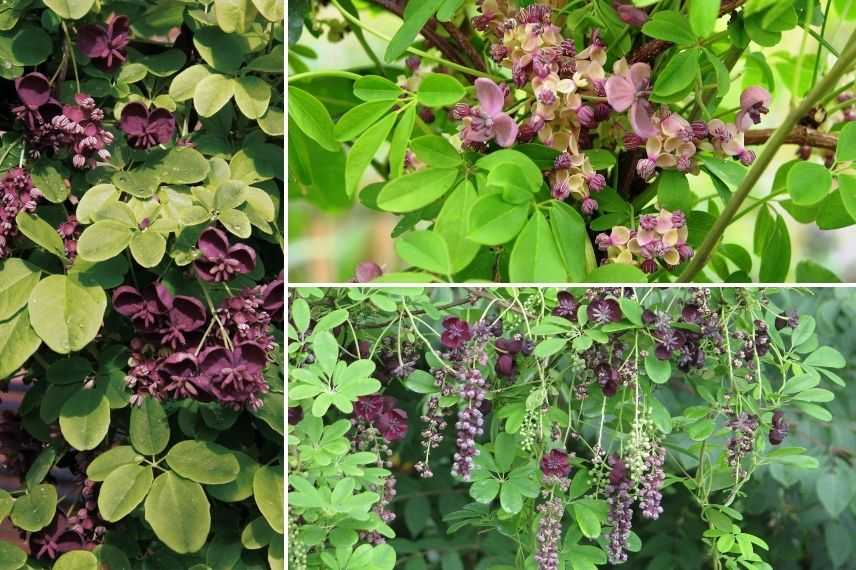
Akebia quinata, Akebia quinata ‘Silver Bells’ and Akebia longeracemosa (photo Peganum)
The Russian vine, a bright and melliferous flowering
The Russian vine (Fallopia aubertii) or Aubert’s knotweed is a perennial native to China.
From late summer until the first frosts, from August to October, it adorns itself with an abundance of delicate spikes of pure cream-white flowers, reaching up to 20 cm. These bright flowers delight pollinating insects.
Its decorative interest also lies in its elegant, dense heart-shaped foliage, which offers lovely bronze reflections in spring. It dries up before disappearing in winter.
Vigorous and hardy down to -15°C, the climbing knotweed can reach up to 8 metres at maturity and can quickly cover any vertical support along a wall or railing with its voluble stems. It is an ideal plant for creating privacy, providing a bit of seclusion on a balcony.
The climbing knotweed enjoys partially sunny or shaded situations. Choose a large container with a light substrate, even slightly calcareous, that remains fairly moist.
Robust, this climber withstands the elements well and requires little maintenance, apart from some pruning to limit its growth on the balcony.
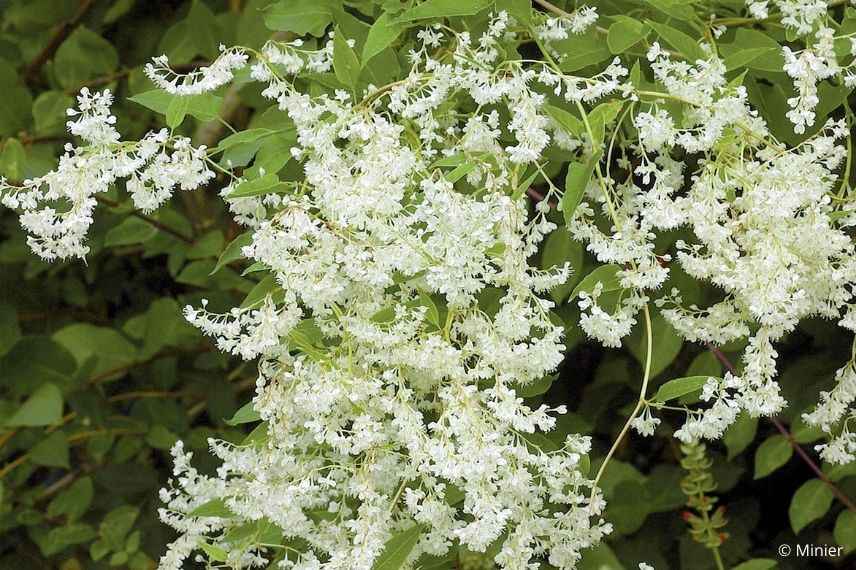
Fallopia aubertii also known as Polygonum aubertii
Discover other Climbers for pot-growing
View all →Available in 0 sizes
Available in 0 sizes
Available in 2 sizes
Available in 1 sizes
Available in 1 sizes
Available in 1 sizes
Available in 1 sizes
Available in 1 sizes
Available in 0 sizes
Available in 1 sizes
Hops, decorative foliage and rapid growth
Hops (Humulus lupulus) is a climbing plant that is voluble and grows very quickly, with woody climbing stems that can reach several metres in a single season.
While it is known for its use in beer production, it is also a medicinal plant.
Flowering occurs in summer, from June to July-August. Hops are dioecious plants: some plants are male, while others are female. The male inflorescences are green panicles, while the female flowers are catkin-shaped, transforming into aromatic cones.
The ornamental foliage of hops is highly dissected and can resemble small vine leaves:
- the common hop, the most imposing, boasts large green leaves;
- the green hop, a variety that produces larger cones (5 cm), displays soft green foliage;
- the golden hop offers, as its name suggests, lush golden foliage, initially blonde then soft green in summer.
All aerial vegetation dries and disappears in autumn, but the plant regenerates each spring.
Grow hops in a large deep container with rich substrate. Provide it with a support such as a trellis or railing, which it can cling to by itself.
Very resistant to diseases and cold (hardy down to -28°C), this climbing plant is very easy to grow with little maintenance.
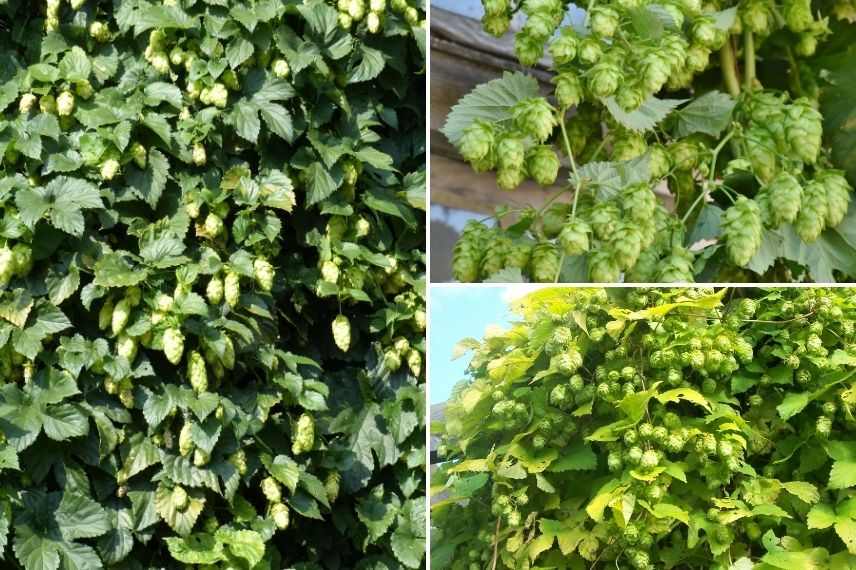
On the left, the green hop Humulus lupulus; on the right, Humulus lupulus ‘Magnum’ and the golden hop Humulus lupulus ‘Aureus’ (photo L. Enking)
Aristolochia, a lush and exotic liana
Aristolochia is a perennial climbing plant typically found along riverbanks, in forests, and understoreys. It is therefore a liana that enjoys partial shade, coolness, and humidity, making it perfect for an east-facing balcony.
In summer, from June to August, it adorns itself with astonishing yet discreet siphon-shaped flowers, in green, yellow, and brown hues, as seen in Aristolochia durior.
It is especially valued for its dense heart-shaped foliage, which quickly creates a true exotic jungle atmosphere. The plant loses its leaves in winter.
Its large dimensions (up to 8 metres at ripeness) allow it to quickly cover an area of nearly 10m².
Moderately hardy down to -10°C, but very resistant to diseases, it can be grown on balconies in regions with mild winters.
Grow aristolochia in rich soil, regularly watered during dry periods. Provide it with support through trellising or cables to allow its voluble stems to climb.
As with most vigorous climbing plants with rapid growth, regular pruning will help contain its spread and maintain a harmonious shape.
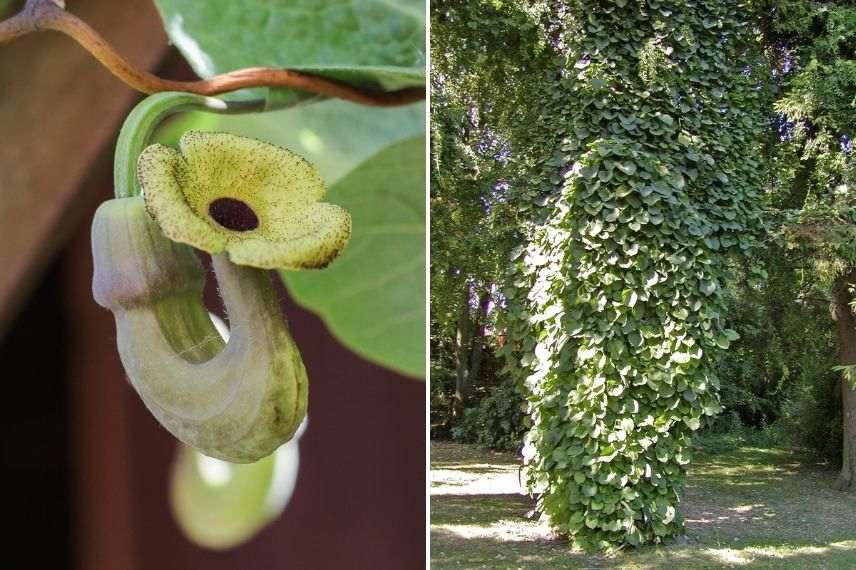
Aristolochia durior or macrophylla
Japanese honeysuckle to scent the balcony
The Japanese honeysuckle is a voluble climbing plant with semi-evergreen foliage (evergreen in mild climates, deciduous in cold climates).
In summer, the plant is adorned with trumpet-shaped flowers that are powerfully fragrant, exuding a floral scent that can be detected from afar.
- Lonicera Japonica ‘Mint Crisp’ offers many aesthetic advantages: yellow flowering, bright red transparent berries, and variegated green and yellow foliage.
- ‘Hall’s Prolific’ rewards us with particularly abundant white, then yellow flowering. The flowers emit an intoxicating scent of lily of the valley, jasmine, and oregano.
- ‘Sinensis’ features fragrant white and dark pink flowers, supported by foliage with purplish hues.
The plant reaches 3 to 6 metres at ripeness. Very hardy below -15°C, the Japanese honeysuckle acclimatises well on most east-facing balconies.
Easy to grow, this climbing plant requires little maintenance. It will thrive in ordinary soil, remaining moist during prolonged drought. And to grow well, it will need to be trained.
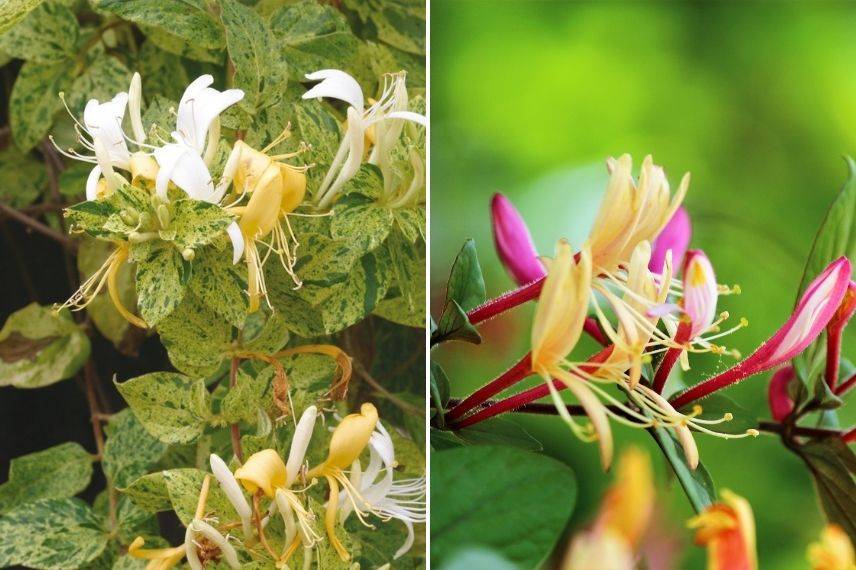
Lonicera japonica ‘Mint Crisp’ and Lonicera japonica ‘Sinensis’ (photo Pixabay)
- Subscribe!
- Contents
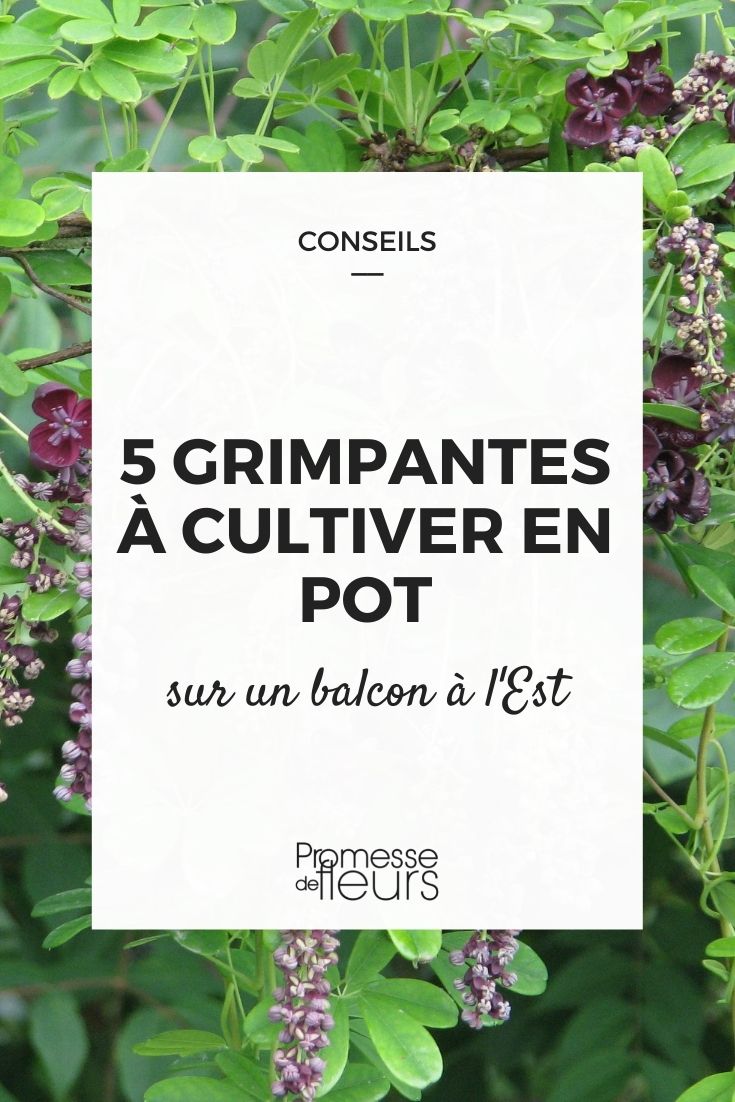
































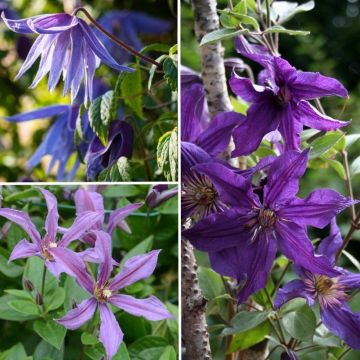
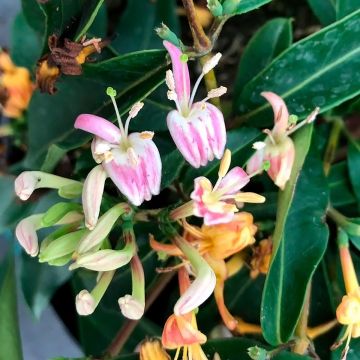

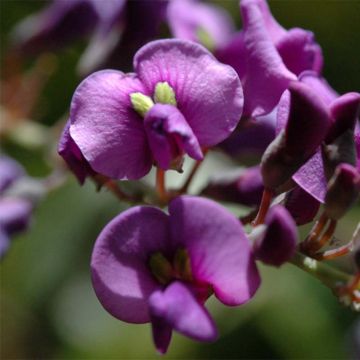
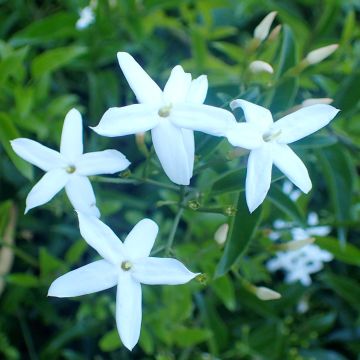
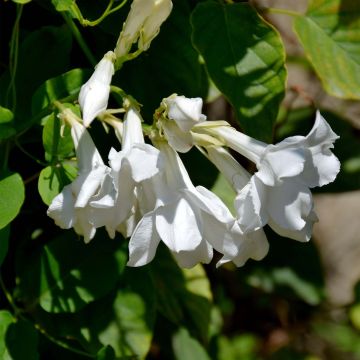
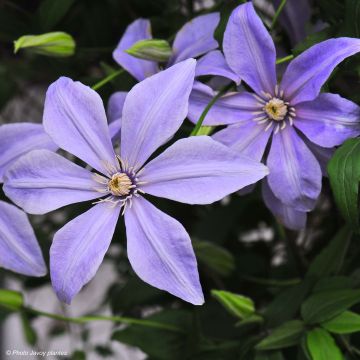
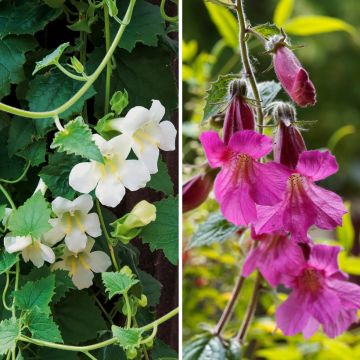
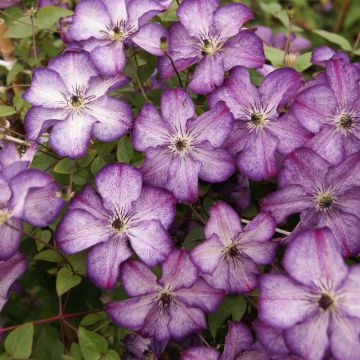
Comments